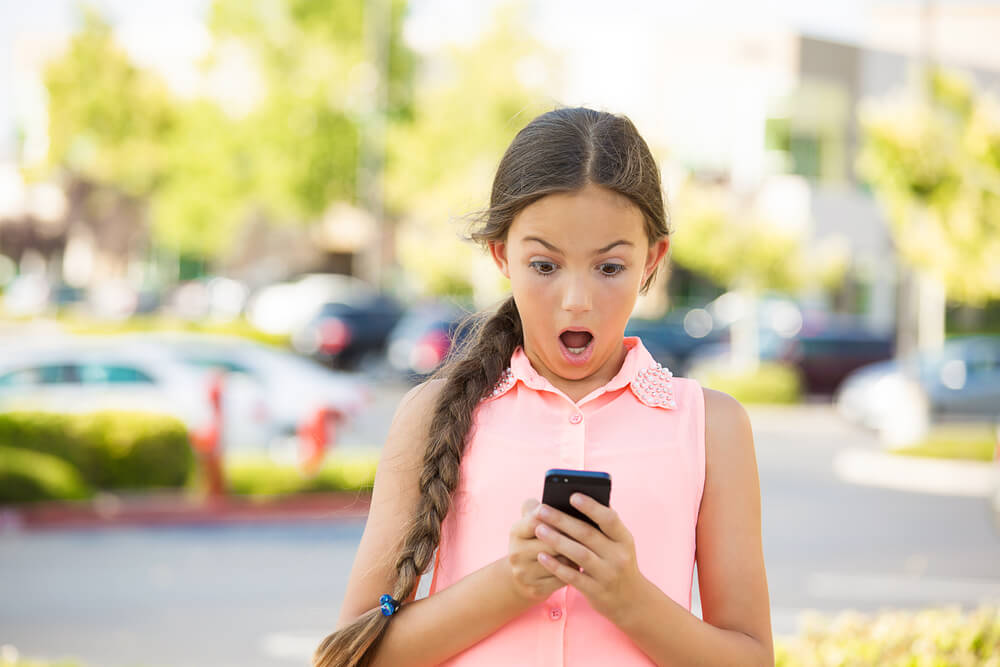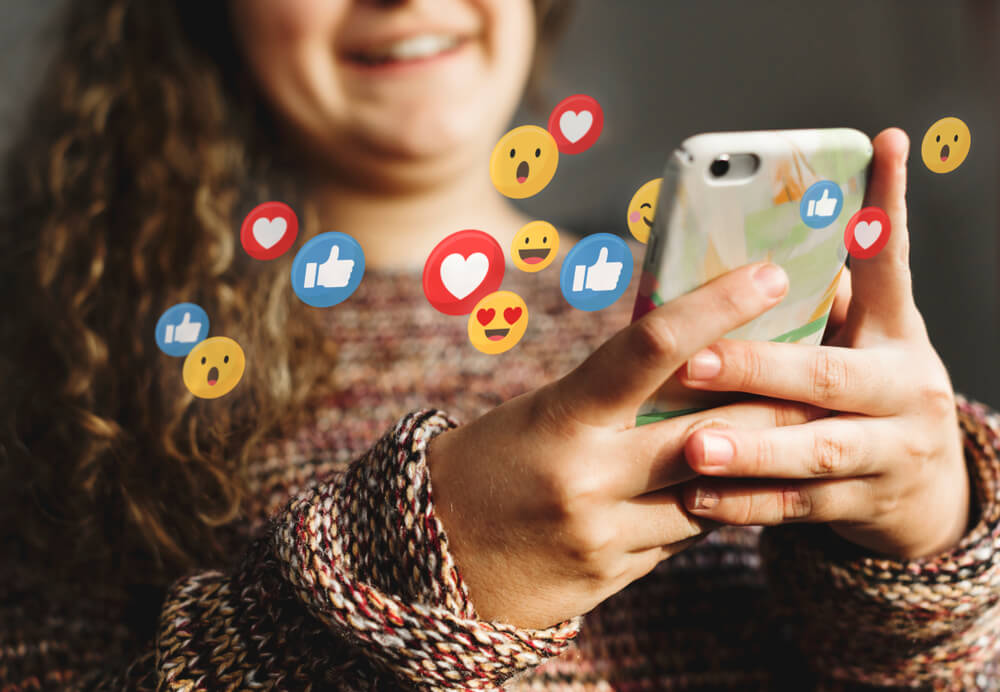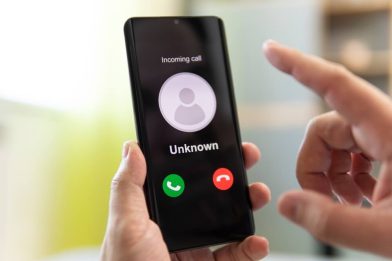Legal Age to Watch Porn in the USA: What To Do With Kids and Teens Safety

How old do you have to be to watch porn in the US? While the legal age to show someone porn is 18 years old, federal accessibility pop-ups online are quite easy to bypass.
When children encounter such content too young, they risk negatively impacting their sexual development and mentality.
In this article, we will discuss how to approach the topic of porn to your children and teens and how watching it too young can impact their sexual development.
Contents:
- Research on Exposure Rates and Effects
- Talking to Your Child
- Managing Reactions and Safety
- Broader Societal Issues
- FAQs
Research on Exposure Rates and Effects

Gladskikh Tatiana/Shutterstock.com
Exposure to porn at a young age can greatly impact attitudes, expectations, and behaviors around sex.
according to statistics, more than half (54%) of children have been exposed to some sort of pornography before the age of 13. This is most likely unintentional and often can happen when using the internet to research homework or school projects. With 4% of the internet’s websites containing X-rated content, simply clicking on the wrong link or getting an unexpected popup is all it takes to become exposed to pornography.
additionally, 90% of children between the ages of eight and sixteen will, at some point, watch or be exposed to pornography online.
How does early exposure to porn impact the mental health and sexual development of our children and young teens?
Early exposure to pornography and sexual imagery, particularly among pre-teens and teenagers, can induce alarming changes in their developing brains, significantly impacting the prefrontal cortex. This region of the brain holds sway over abilities such as impulse control, willpower, and understanding consequences.
Pornography can essentially rewire these brain regions with its simulated, intense stimulation, often resulting in exaggerated, distorted perceptions of sex. Consequently, young viewers may struggle with regulating impulses, aggression, and anticipating the outcomes of their actions, presenting challenges that ripple into multiple aspects of their personal and social lives.
Early exposure to pornography often introduces risky behaviors, attitudes, and expectations that can negatively influence sexual development. For example, it can portray rough or violent sex as standard, thus potentially fostering a sense of normalcy around unhealthy sex practices in young minds.
Moreover, the unrealistic narratives often leave out the essential practice of using protection, leading to an undermined perception of the importance of safe sex.
It can also reinforce archaic gender roles, subconsciously instilling rigid, polarized behaviors that can potentially hinder the development of healthy, respectful sexual relationships. Therefore, addressing this exposure and guiding youth appropriately becomes incredibly crucial.
There is also a connection between watching adult videos and developing anxiety. There is often an overcoming emotion of guilt or shame after watching pornography, which can make your pre-teen or adolescent anxious. According to a study, 50% of teens felt guilt or shame after watching pornography. The act of watching porn can cause chemical imbalances in the brain that can lead to social anxiety, which can take years to overcome.
Pornography can also become highly addictive, especially to teens who are still developing. This is due to the intense release of dopamine while watching this type of content. Your teen may want to chase this dopamine high to feel good or happy, but the feeling is temporary and can leave them feeling in a slump after. Signs of porn addiction include persistent urges to watch porn, difficulty resisting these urges, lack of interest in intimacy with a partner, moodiness and irritability, intrusive thoughts about porn, and stepping away from social activities. If you notice your teen experiencing these symptoms, it’s important to have an open conversation and seek out ways to help them overcome the addiction.
Lastly, heavy porn exposure can cause issues with the sexual development of your teen. They can experience erectile dysfunction or intimacy issues when in a relationship.
There are some age/gender differences in how to approach the topic of porn, which we will touch on in this article.
Talking to Your Child

New Africa/Shutterstock.com
Having an open dialog with your children about the sensitive topic of pornography and sex is paramount in our digitally advancing world.
The first step is introducing the topic in age-appropriate ways through positive communication strategies. You don’t need to go in-depth for a young child—a simple explanation that there are certain shows, pornographic websites, or pictures that are not meant for kids can suffice. As they grow older, these conversations can become more detailed about sex education and conversations about pornography.
It’s crucial to dismantle the shroud of embarrassment around sexual curiosity and desire. Let your child know it’s normal to be curious about these topics but also underline that adult videos aren’t an accurate representation of real-life sexuality in intimate relationships. Encourage questions—remember, you’d rather provide the answers than have them get misguided information elsewhere, which can potentially harm their perceptions about sex.
Maintain a positive tone about sex, refraining from vilification of it or porn. This doesn’t mean you’re endorsing porn for your child but merely acknowledging its existence. Simultaneously, enlighten them about the significance of safe and consensual sex practices.
Setting rules about using certain devices and putting parental controls on smartphones, tablets, and laptops can also help you gain control of what your child is exposed to.
Related: Helpful Parents’ Guide: How to Block Porn on Kids’ Devices.
If your child has been exposed to porn or admits to being curious about it, do not panic or shame them. Managing reactions as parents are crucial in this situation. Gently explain to them that they are not at the right age or maturity to view this type of content. You can go into as much or as little detail as you think is necessary for your child to understand the situation.
Clear communication can help your child navigate through the often misrepresentative world of pornography and develop a healthy understanding of sex and relationships.
Managing Reactions and Safety

DimaBerlin/Shutterstock.com
Dealing appropriately with your reactions is crucial upon learning your child has been exposed to pornography. Keep your emotions in check—remaining calm and nonjudgmental fosters open communication. Let your child know you’re there to support them, not to berate them. Critical thinking and emotional intelligence are required to handle this situation effectively. When parents and teens have a nonjudgemental interaction and impactful conversation about pornography, it can leave a lasting positive impression about sex on the teen throughout their developmental years and into adulthood.
As vigilant parents or caregivers, it’s key to be able to identify the warning signs of a potential porn addiction. Altered mood or behavior is one noteworthy indicator. They may display excessive irritability, indulgence in secretive behavior, or a heightened state of anxiety, often seeming unusually edgy.
Another clear sign is if the child is spending an unusually high amount of time online. The internet, with its vast array of content, can be a fascinating place for teenagers. But, if your child is staying up late, sacrificing sleep for screen time, or neglecting their schoolwork, it could point to a problem.
In their quest for more privacy, they might start demanding isolation. This could be characterized by spending lengthy hours locked in their room or screened bathroom. Additionally, gradual distancing from friends and family, coupled with a notable decrease in outdoor activities, could also be indicative of potential addiction.
While these warning signs aren’t definitive proof, they are red flags. It’s crucial to follow these up with honest, empathic conversations about online safety, healthy screen-time habits, and the potential risks associated with excessive exposure to pornography.
It’s essential to implement safety measures, too. A kid-friendly network setting, usage monitoring apps, or parental control features can help limit future exposure. Share the importance of these precautions with your child.
Effective safety methods to prevent your child from porn exposure are the Findmykids and the Kids360 apps:
- Kids360 is a comprehensive parental control app that offers parents the ability to monitor and manage their children’s online activities. It provides features like content filtering, app blocking, setting screen time limits, and usage statistics. It emphasizes privacy and transparency, ensuring a secure and non-intrusive way to protect your child in the digital realm.
- Findmykids, on the other hand, has an additional feature that distinguishes it in terms of child safety. Alongside location tracking and safety zones, it offers a live listening function. This function allows parents to listen in on their child’s surroundings, ensuring that they are not exposed to any harmful content or conversations.
Download the Findmykids and Kids360 app right—it is a good way to safeguard your kids from any dangers!
Remember, the goal is not to shame or scare them but to keep them safe and to educate them about responsible internet usage.
Broader Societal Issues

New Africa/Shutterstock.com
It’s important to recognize how pornography is often deeply entwined with broader societal norms about gender stereotypes, sexism, and violence. This is frequently reflected in the implicit messages sent by pornographic content, which often present a distorted picture of sexual relationships, reinforcing harmful stereotypes and behaviors.
For instance, pornography often objectifies women, portraying them as sexual objects rather than individual beings with autonomy and rights. This can contribute to the perpetuation of sexist attitudes and gender-based discrimination.
Violence, too, is frequently normalized in pornography, with concerning implications for young viewers’ perceptions of what constitutes a healthy, consensual relationship. These sexual violence factors can lead to physical and mental damage to both your child and the people they come in contact with later on in life.
To address these societal factors, it’s crucial that we deploy targeted strategies, including legislation, youth education, and guidance from parents and teachers. Laws can and should regulate the creation and distribution of pornographic content to limit the likelihood of its misuse and the spread of damaging narratives.
Nevertheless, legislation on its own is unlikely to be enough. Hence, the importance of education. Schools need to explicitly tackle the subject, providing students with comprehensive sex education that discusses the potential pitfalls of pornography alongside teachings about consent, respect, and equality.
Lastly, parents and caregivers play a crucial role in mitigating the impact of pornography. Open, honest, and ongoing conversations about pornography, even if it tends to be an awkward conversation, and its potential effect on attitudes and expectations, and the values of respect and equality in relationships, can go a long way towards ensuring that young people are prepared with a healthy and realistic understanding of sex and relationships.
So, the legal age to watch explicit content in the USA is set at 18, in compliance with federal law. This regulation aims to protect young individuals from engaging in activities that are intended for adults and may involve explicit sexual acts.
Any attempts to access such material before the age of 18 are not only legally prohibited but can also expose young minds to content that may not be suitable for their age. Therefore, it’s vital for parents, guardians, and educators to have open and honest conversations with young people about the potential consequences of seeking sexual gratification through illegal means and the importance of respecting these age limits.
FAQs

Raushan_films/Shutterstock.com
Below are some of the most frequently asked questions concerning the legal age of watching porn in the United States.
What Happens If a Child Watches Inappropriate Things?
Exposing a child to pornographic material can influence their brain development and shape their attitudes towards sex. When they stumble upon sexually explicit content, they may not fully understand what they’re seeing, potentially leading to confusion and misinformation.
Coming across pornography at an early age can distort a child’s perspective of what’s normal in sexual relationships. Considering that most pornographic content portrays unrealistic, and sometimes even harmful aspects of sex, children may see these representations as standard or acceptable. This could also lead to unrealistic expectations and unhealthy behaviors as they grow into adults.
Despite the potential consequences, it’s crucial to remember that it’s not about completely shielding kids from such content—because let’s face it, the chances of them encountering it are quite high in today’s digital age. Instead, the focus should be on open communication and education. Regularly talking with your child about sex, consent, and respectful relationships can help them differentiate between pornographic portrayals and real-life expectations.
How Many Teens Watch Porn?
By 17, 73% of teenagers have seen porn accidentally or intentionally online.
However, teenage boys are more likely to view pornography than teenage girls. Of the teens who watch adult videos, 59% of them watch it more than once a week.
Is it Normal For a 13-Year-Old to Watch Porn?

pathdoc/Shutterstock.com
The average age a child is exposed to adult videos is just 12 years old. As our children go through puberty and turn into teenagers, they become curious about their sexuality and want to learn more about it. Some of the most accessible content about sex is porn, unfortunately.
It is normal for a 13-year-old to be interested in this inappropriate content. It’s all about curiosity and the desire to be more mature. If you discover your young teenager has seen it, do not overreact. Calmly discuss the content with them and explain the dangers of addiction and behavior changes.
At What Age Do Kids Start Watching Porn?
By the age of 13, 54% of kids have been exposed to pornography either accidentally or intentionally.
However, of the teens between the ages of 13 and 17, 44% have viewed pornography intentionally.
So, most kids start watching or become curious about porn around the age of 13.
The picture on the front page: AS photo family/Shutterstock.com
Проверьте электронный ящик



















